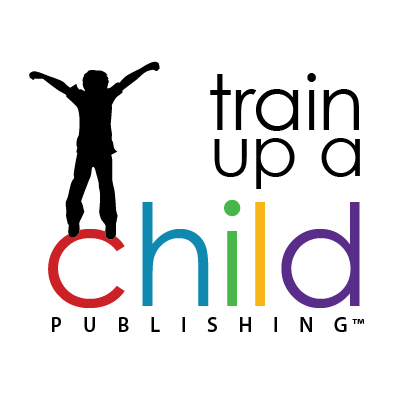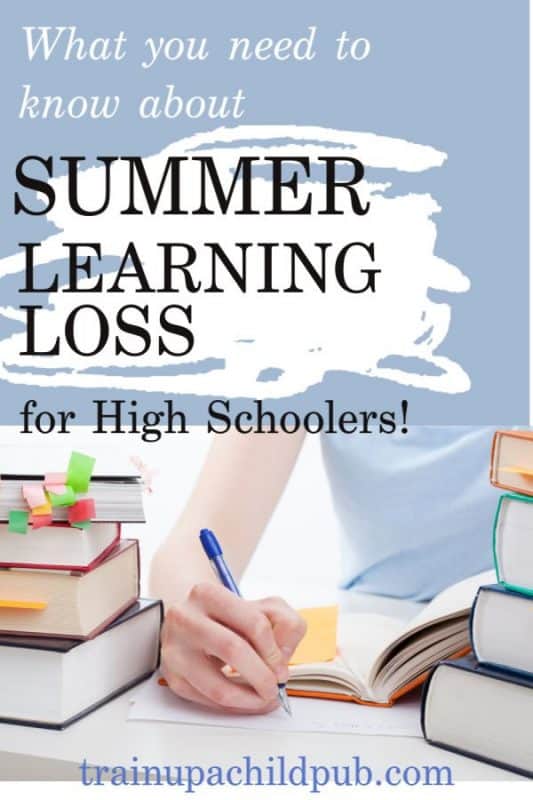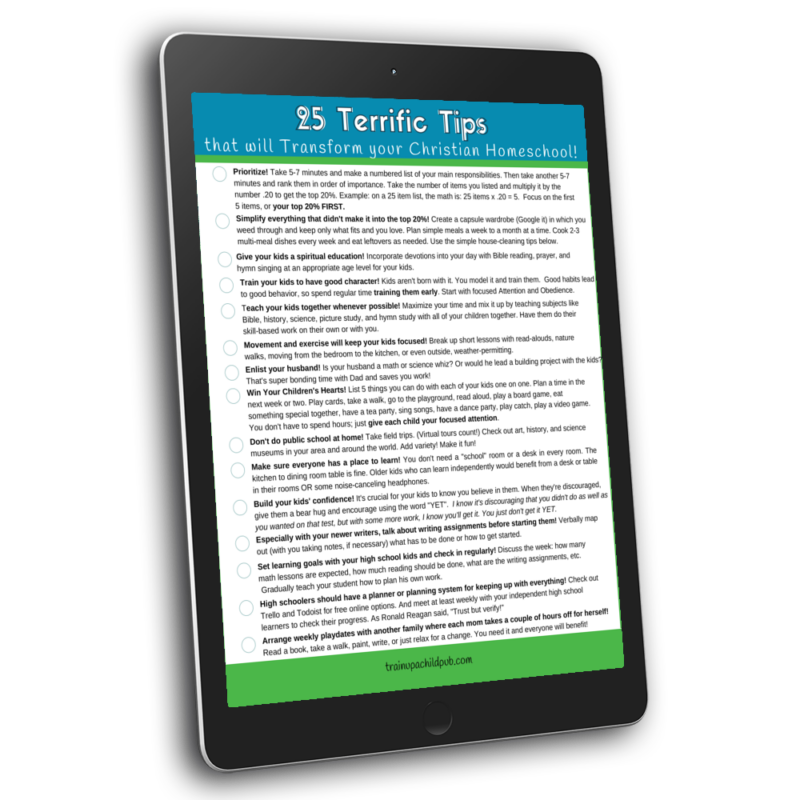What you should know about Summer Learning Loss and what you can do about it
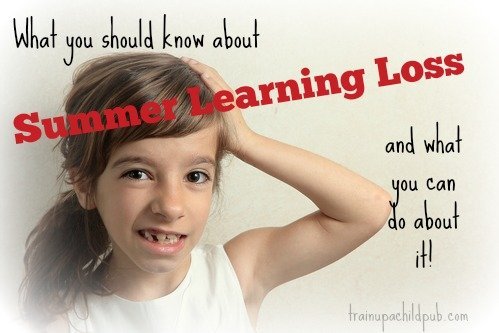
Also known as the summer slump or summer slide, summer learning loss is what your students forget between the end of one homeschool year to the beginning of the next.
Fortunately for home educators, we can avoid summer learning loss in several easy ways without continuing to homeschool constantly through the summer.
So how much knowledge can your kids lose with three months of solid break from all skill-based learning activities?
Public school teachers say they must re-teach a MONTH or more of what kids had already learned the previous year to make up for summer learning loss. And just because we are home-educating families, we are not immune, especially if we follow the traditional public school year and take the summer off.
Editor’s Note: This post includes a few affiliate links. This means that if you use one of these links to buy something, we might get a small commission at no extra cost to you. But we thank you from the bottom of our hearts for supporting us in this way!
TABLE OF CONTENTS
-
- Are your preschoolers interested in letters? If you have pre-readers, let them work on their letters by using their bodies to form letters (and have you or a sibling guess which letter), write them in a pan of sand or in a sandbox, or build letters with blocks. Anything to add a hands-on element.
-
-
Give your kids exposure to learning activities.
Take them to the beach, mountains, forest, lake, aquarium, a history/science/art museum, and to listen to live music.
And talk about everything while you are experiencing it and after you get home. Help them notice the intricate shells and the “ocean” sounds they hear as they put their ear to a conch shell.
Help them see the varieties of trees and notice their different leaf shapes, as well as the color and texture of the bark.
At the history museum, it’s always fun to see some weird-shaped tool and discuss what it might have been used for with your kids. Engage their brains!
In addition to these active learning experiences, let your children participate in “at-home” learning experiences. For example, cooking, cleaning the house, doing the laundry, and making their beds. Yes, I know it’s messy as they begin doing these things. And it would be a lot easier to do them yourself. But it’s so worth it to teach them to do common household chores. And it will eventually make your life much easier.
Do yourself a favor and teach your children to clean up and corral their toys early!
Also, this is the time to start that habit training that Charlotte Mason talked so much about. Start getting your littles ready for homeschooling by teaching them to listen to you and be obedient, take care of their belongings, and do tasks well..
Have your mid-elementary school children work up to reading 3o minutes a day to help combat the summer slump.
If your primaries are beginning readers who are solidifying their skills, now is not the time to let them lose ground! Again, take all of your kids to the public library once a week and participate in their free summer reading program that will help you track your kids’ reading (or your time reading aloud to them) and get stickers or little rewards when they reach certain milestones.
Even 5-year-olds can’t resist checking off those boxes, experiencing the rush of competition, and working toward a goal and a prize!
Read a combination of books — some easier books to build reading fluency and some more challenging ones to build their comprehension and vocabulary.
- Expose your primaries to biographies, historical fiction, science fiction, nonfiction, and excellent literature.
- Don’t forget to listen to audiobooks, too! Help your kids find books and magazines in areas they are interested in. This is especially helpful for a reluctant reader. Spend some time in the morning when they are used to doing school or in the afternoon when it’s too hot to play outdoors and have a “reading time,” when everyone quietly reads their books and looks at their magazines. Pro tip: Include snacks!Even if what your children choose is beneath their reading level. They are still building reading fluency by just putting the time in daily. And as I said before, help them read different genres of books, such as biographies, non-fiction, historical fiction, and more. Make sure you and Dad are modeling reading as well. Let them see you reading: for pleasure and/or to learn something. Also, talking about what you’re reading and why you’re reading it will help a reluctant reader see its value.
Easy Way to Eliminate Summer Slide in Math for Your Younger Kids
Primaries can do a lot around the house, too. One of the best ways to reinforce arithmetic is to let them help with meal preparation.
-
-
-
-
- How many forks/knives/spoons do we need?
- How many utensils is that altogether?
- If we are going to make twice as many cookies, we need to make the recipe ‘twice.’ But we don’t have to make the recipe twice; we can make it once if we use double the ingredients. So if we need two cups of flour and we want to double the recipe, how much flour do we need? We can figure it out by making this number sentence: 2 (cups) + 2 (cups) = 4 (cups).
-
-
-
-
- And just like preschoolers, primaries need to spend a certain amount of time each and every day moving. Going for a walk, swimming lessons, dancing, and other active, whole-body experiences help children learn. Here’s a fun way to help your kindergarten through second graders to practice their addition and multiplication facts: play the Sum Swamp game! As you can imagine, games are a painless way to practice math facts, especially more fun than worksheets.Two other Math resources for your preschool and primary children that I’m experimenting with now are Bedtime Math and MiniMath apps. You can find them in the Apple Store or on Google Play. And they are available in English and Spanish! (You can toggle between them!)
One of the best things to help avoid the summer slump in elementary students is to do math drills.
Besides cooking and working with recipes, doing some almost daily math drills at this age is not bad.
- Anytime you can make this into a game:
-
-
-
-
- It might be as simple as standing in a circle with your kids, saying, “4+6”, and then throwing a ball to someone. Whoever catches the ball has to answer the question. Then that person gets to come up with a problem and throw the ball to someone else.
- Another fun game is “Math War” with cards: This is so flexible and can be so much fun! Here’s how: Two at a time can play. First, divide up the cards into two piles, with each person getting a pile. Each person takes her top card and flips it face up simultaneously. The first person to add the numbers together gets both cards. You can also subtract the smaller number from the larger or multiply the numbers. If you have a younger and older child, one can add or subtract, and the other one can multiply. To make this more challenging, you can even have another person sit alongside you to call out the numerical operation needed.
- Drill math while walking outside while you’re walking. Simply skip count by twos, threes, fives, tens… so easy and useful when it comes to learning or practicing multiplication facts!
-
-
-
Don’t forget to use writing in your summer activities!
Writing: Look for opportunities for your students to write. The best kind of writing to do always has a “real world” purpose. For example:
-
-
-
-
- Have your kids write Grandma a letter
- Ask your 4th grader to write simple instructions for caring for a pet when you are on vacation.
- Task your 5th grader to write directions from your house to their best friend’s.
- Ask your children to list what they would like to learn more about next year.
-
-
-
-
- This is more “schoolish,” but you can also have your student(s) keep a journal and write a few sentences responding to a daily prompt or record what they did that day.Be creative! The more practical the reason for writing, the easier it is to get your child to do it.
-
-
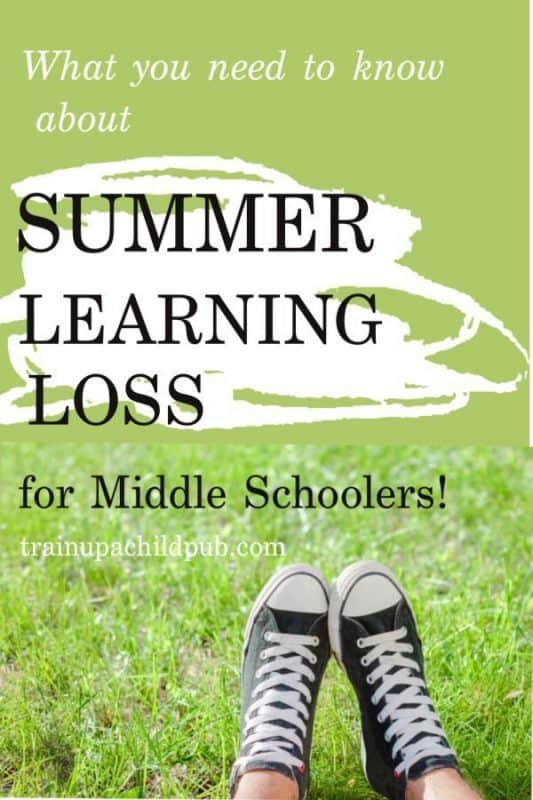
Avoiding the summer slump with the upper grades
Learning loss becomes a little more serious as your student moves from elementary school into middle school and then into high school. Find out how to immunize your older children against summer learning loss in parts 2 and 3 of this series!
If you have a middle schooler, make sure to see Part II in this series: Summer Learning Loss for Middleschoolers.
If you have a high school student, definitely read Part III in this series: Summer Learning Loss for High Schoolers, to see just how important those summers are!
So, what are you doing this summer to hedge your bets against summer learning loss?

